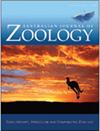Skin morphology in fossil and living dipnoans
IF 1
4区 生物学
Q3 ZOOLOGY
引用次数: 0
Abstract
Abstract. The morphology of the skin of living dipnoans can be compared with the arrangements present in the dermis and epidermis of the snout and mandible of fossil dipnoans, but the structures that may have been present in the fossils are significantly reduced in living lungfish. One advantage of assessing the living species is that soft tissues are intact. Fossil dipnoans have cosmine in the epidermis of the snout and mandible, and the dermis is supported by several layers of structured extracellular matrix. Cosmine includes dentine elements as well as pore canals. Among the pore canals are gaps in the cosmine layer that would have housed electroreceptors in the living fish. Below the cosmine is a layer of cancellous bone, separated from the dermal tissues within by a thin, almost continuous, ossified layer. Deep to this layer is a region that lacks any ossified structure, and below this the tubules that pass through the dermis terminate in irregular bulbs. Thin branches with an ossified coat arise from the tubules in the terminal layer and enter the cancellous bone below the cosmine and the pore canals, although they are not numerous. Living dipnoans have no ossified structures in the skin, and lymphatic vessels in the snout are reduced to the plexus below the epidermis, and the lymphatic loops that emerge from the plexus and enter the epidermis. These are numerous and occur in regular layers. In the living species, the lymphatic loops are close to electroreceptors. This may have been the case in fossil lungfish as well. Parallels in fossil and living dipnoans are present.化石和活恐龙的皮肤形态
摘要活体肺鱼的皮肤形态可以与化石肺鱼的鼻部和下颌骨的真皮和表皮进行比较,但化石中可能存在的结构在活体肺鱼中明显减少。评估现存物种的一个优势是软组织是完整的。鼻部和下颌骨的表皮中存在化石恐龙,真皮由多层结构的细胞外基质支撑。牙本质包括牙质成分和孔管。在这些孔道中,有一些缝隙存在于钴胺层中,这些缝隙可以容纳活鱼体内的电感受器。在皮肤下面是一层松质骨,由一层薄薄的、几乎连续的骨化层与真皮组织分开。在这一层的深处是一个没有任何骨化结构的区域,在这一层下面是穿过真皮层的小管,最终形成不规则的球茎。具有骨化外衣的细分枝从末梢层的小管中产生,进入孔道和孔道下方的松质骨,尽管数量不多。活的斑鼻动物在皮肤上没有骨化的结构,鼻部的淋巴管缩小到表皮下的神经丛,从神经丛出来进入表皮的淋巴袢。它们数量众多,排列整齐。在现存物种中,淋巴回路靠近电感受器。这可能也是肺鱼化石的情况。化石和活体恐龙有相似之处。
本文章由计算机程序翻译,如有差异,请以英文原文为准。
求助全文
约1分钟内获得全文
求助全文
来源期刊
CiteScore
2.40
自引率
0.00%
发文量
12
审稿时长
>12 weeks
期刊介绍:
Australian Journal of Zoology is an international journal publishing contributions on evolutionary, molecular and comparative zoology. The journal focuses on Australasian fauna but also includes high-quality research from any region that has broader practical or theoretical relevance or that demonstrates a conceptual advance to any aspect of zoology. Subject areas include, but are not limited to: anatomy, physiology, molecular biology, genetics, reproductive biology, developmental biology, parasitology, morphology, behaviour, ecology, zoogeography, systematics and evolution.
Australian Journal of Zoology is a valuable resource for professional zoologists, research scientists, resource managers, environmental consultants, students and amateurs interested in any aspect of the scientific study of animals.
Australian Journal of Zoology is published with the endorsement of the Commonwealth Scientific and Industrial Research Organisation (CSIRO) and the Australian Academy of Science.

 求助内容:
求助内容: 应助结果提醒方式:
应助结果提醒方式:


